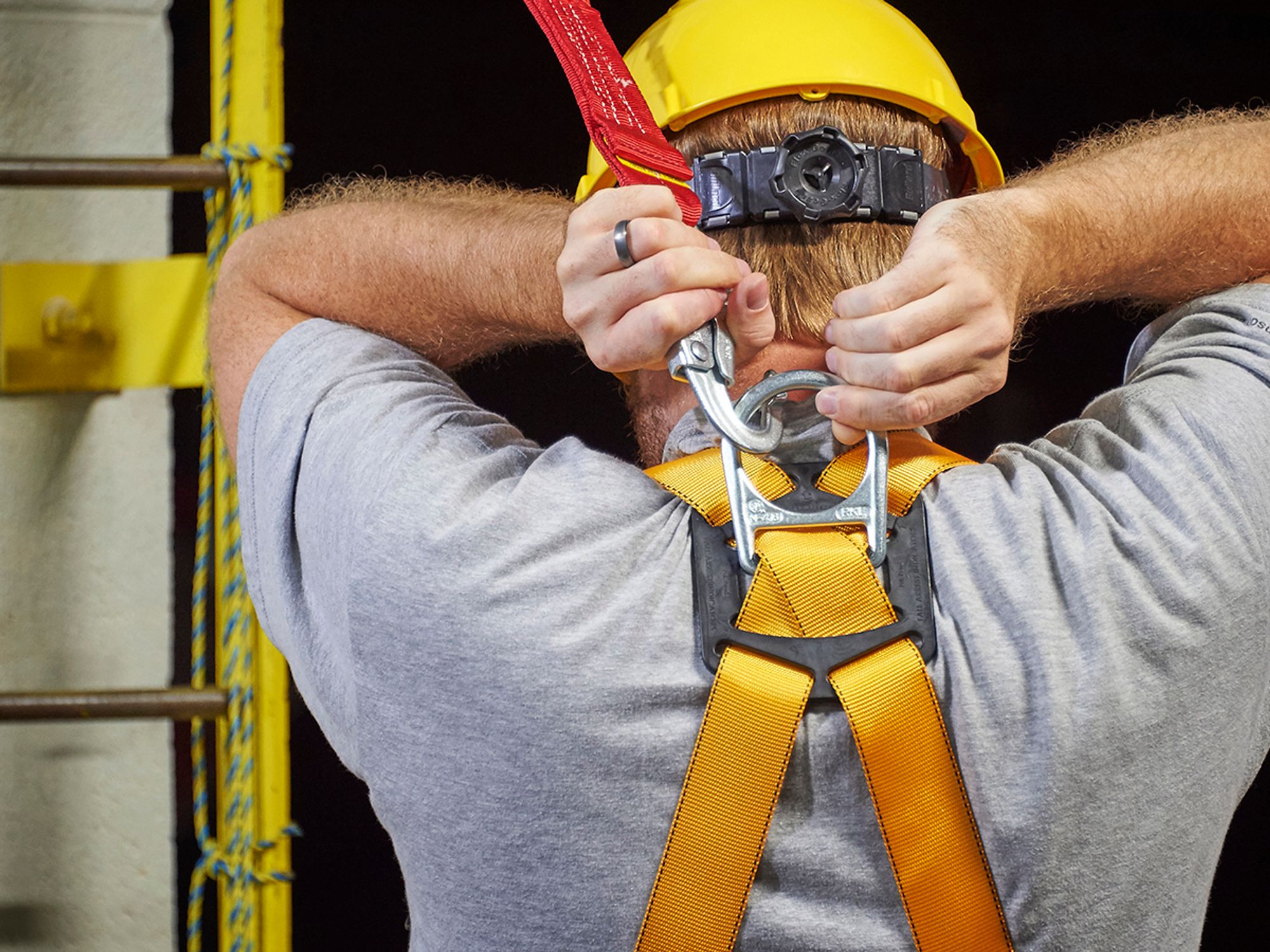InstituteSafety & HealthGeneral Industry SafetyFall ProtectionFall ProtectionIn Depth (Level 3)EnglishAnalysisFocus AreaUSA
Adhere to design requirements for personal fall protection systems
['Fall Protection']

- Fall protection systems must meet several specific design requirements.
- Fall protection systems must be inspected any time they are subjected to impact, and not used again until the system is deemed safe.
Employers must ensure that each personal fall protection system meets the following design requirements:
- Connectors used in personal fall protection systems must be made of dropforged, pressed or formed steel, or equivalent material and have a corrosion-resistant finish. They must also have smooth surfaces and edges to prevent damage to interfacing parts of the fall protection system.
Note: Employers must not allow employees to wear personal fall protection equipment if wear and tear reaches the point where the equipment performance might be compromised. - Vertical lifelines are only designed to support one worker. Allowing additional workers to use the same vertical lifeline creates a hazard. For example, if more than one worker was attached to a vertical lifeline and one worker slipped, the other worker could also fall.
- Lanyards and vertical lifelines must have a minimum breaking strength of 5,000 pounds. Breaking strength is the point at which a lanyard or vertical lifeline will break because of the stress placed on it.
- Self-retracting lifelines/lanyards that allow free fall of more than two feet, ripstitch, and tearing and deforming lanyards must have a minimum tensile load of 5,000 pounds. If self-retracting lifelines/lanyards allow free fall of less than two feet, the minimum tensile load is 3,000 pounds.
- If an employer allows knots in lanyards and lifelines, a competent person or qualified person must inspect them before any employees use them, to ensure they still meet the minimum strength requirements.
- D-rings, snaphooks, and carabiners are devices used to connect or couple together components of personal fall protection systems. D-rings, snaphooks, and carabiners must:
- Sustain a minimum tensile load of 5,000 pounds, and
- Be proof tested to a minimum tensile load of 3,600 pounds without cracking, breaking, or incurring permanent deformation.
- The gate strength of snaphooks and carabiners must be proof-tested to 3,600 pounds.
- Snaphooks and carabiners must:
- Be the automatic locking type that requires at least two separate, consecutive movements to open, and
- Not be connected to any of the following unless specifically designed for such connections:
- Webbing, rope, or wire rope;
- Each other;
- A D-ring to which another snaphook, carabiner, or connector is attached;
- Any object that is incompatibly shaped or dimensioned in relation to the snaphook or carabiner so that the gate could accidentally be dislodged.
- Horizontal lifelines must:
- Be designed, installed, and used under the supervision of a qualified person; and
- Be part of a complete personal fall arrest system that maintains a safety factor of at least two.
- Anchorages must:
- Be capable of supporting at least 5,000 pounds for each employee attached; or
- Be designed, installed, and used under the supervision of qualified person, as part of a complete personal fall protection system that maintains a safety factor of at least two.
- Travel restraint lines must be capable of sustaining a tensile load of at least 5,000 pounds.
- Lifelines must not be made from natural fiber rope, and polypropylene rope must contain an ultraviolet light inhibitor.
Personal fall protection systems and their components must be used only for employee fall protection. They may not be used for hoisting any other equipment or materials.
Personal fall protection systems or equipment subject to impact must be immediately removed from service and not used again until a competent person can inspect the system or components. The competent person must determine if the system or components are still safe to use.
